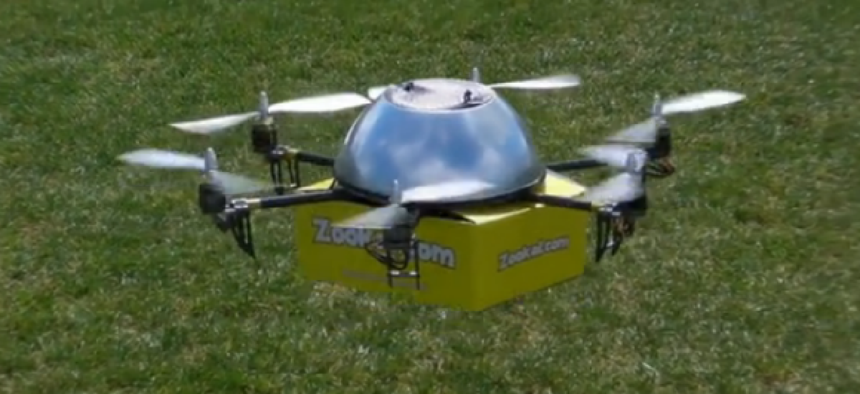Literary drones ready to drop books instead of bombs


Connecting state and local government leaders
In some parts of the world, drones overhead can send people diving for cover. But in Australia, drones may soon be delivering books and other reading materials across the continent.
The U.S. government has been leading the way in drone technology, pioneering ways to control multiple drones at the same time, testing innovative ways they can attack each other and even giving the robots the ability to think for themselves and run missions without human intervention. But more peaceful civilian uses of drone technology are still in their infancy, and restricted to tightly controlled experiments run by research universities or police forces and overseen by the FAA.
Down Under, the Australian version of the FAA, the Civil Aviation Safety Authority, actually encourages the private use of drones for everything from covering sporting events to helping out with search and rescue operations. And coming soon a startup called Flirtey plans to use drones to deliver textbooks and reading materials (purchased from another startup called Zookal) for free anywhere on that continent.
The founders told TechCrunch that they are addressing privacy and safety concerns with their drones. The unit they are using to transport books has six helicopter rotors and multiple batteries so that if any rotor or battery fails, the aircraft can still fly. Additionally, if something goes wrong in flight, the units are programmed to hover and await human commands or to safely land until they get new orders. Finally, the units don’t carry any cameras, which should alleviate concerns about privacy and aerial surveillance, though authorized users can track their shipments via computers or smartphones, so they will know when their automated delivery bots are arriving.
The Zookal folks want to take their drone-delivering book business to the United States by 2015. On paper, that seems possible given that in 2012 Congress ordered the FAA to integrate drones into domestic airspace within the next three years. However, only two paths are possible right now to get people and companies outside of the government on board. Operators can apply for an experimental airworthiness certificate for private-sector civil aircraft to do research and development, training and flight demonstrations, or they can try to get a Certificate of Authorization, though those are normally reserved for aircraft owned by government organizations, like police forces, or quasi government organizations like universities. There were 327 groups operating with COAs in 2013.
Drone delivery of books in Australia might work for Zookal because of the combination of a less restrictive regulatory environment and the high cost of shipping. It costs almost eight Australian dollars to ship a book to some more remote parts of that country, if there is reliable service at all. Zookal estimates it would only cost about sixty cents to fly a book in by drone, which is why the company doesn't plan to charge for drone-enabled shipping.
In the United States, you can be sure the FAA is going to be strict on granting permits to flying robotic mailmen, especially in densely populated areas. And with the country’s more developed infrastructure, almost nobody is unreachable, fairly cheaply, via the Postal Service or a private carrier. Then again, instead of saving money, Zookal might do better promoting drone delivery as an added feature to U.S. buyers. I know I would pay more to see a robot bomb a new book into my front yard. I just wonder how they would handle returns.
Flirtey Zookal flight from The PR Group on Vimeo.




